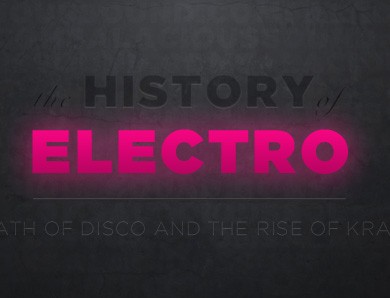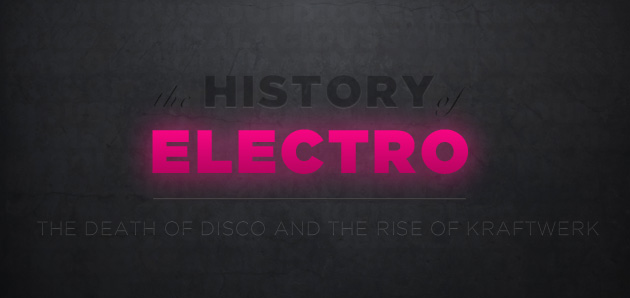This is part one in Salacious Sound’s The History of Electro, chronicling the rise of electro to pop status. Check back on Friday for the next installment.
The basic questions of music history, like all history, are: what has happened, and why? What events, what series of developments, led us to this point? In our time, electro baselines and rhythmic drum beats have completely transformed modern pop music. Electro has become the cultural soundtrack – from dubstep to the indie-electro fusion of the Yeah Yeah Yeahs and the rise of Lady Gaga in 2009, electro is in everything and everywhere. How did this happen? And what does electro’s dominance mean in the context of music history at large? Does electro have an ideology like funk and the blues, or is it a culturally vapid experience of fist pumping?
Electronic music as we know it really began with disco.
By the late 1970s the disco fever that permeated the clubs of New York and Philidelphia had forever changed the musical landscape of America. The repetitious beat, and funk itself, had irrevocably altered the experience of dance, and a clubbing culture had been born. The disco beat infused dance floors with an undeniably sexual experience.
Disco had done something important: it revolutionized dance club culture by infusing the sexual atmosphere of post 1960s America with the cool and smooth baseline of funk. But disco’s genesis was not in mainstream clubs, nor in the sorts of places one might expect popular music to be born – quite the opposite in fact. These clubs were safe havens for deviants and dissidents of all sorts. They were the site of black and gay expression. Disco took root in oppressed communities seeking to define themselves in new ways and the early days of disco were a unique cultural experience in this way. But the ear of pop culture soon discovered disco – and it exploded. It’s no small point that much of modern pop bears an extraordinary debt to the Motown chords of Diana Ross and Barry Gibb‘s falsetto.
But disco by the late 1970s had run its course, and by July of 1979, it had all but died.
No single cause is responsible for disco’s downfall – though many music historians regard the Disco Demolition Night of 1979 as “the night disco died.” Local Chicago rock DJs Steve Dahl and Gerry Meier had organized a promotional night at a White Sox doubleheader in Comsikey Park – the White Sox stadium until 1991. Attendance for the evening shattered the venue’s official capacity of 44,000 – with well over 50,000 being admitted, and as many as 40,000 crashing Chomsikey’s gates. They had all been told to bring as many disco records as they could find to participate in their mass destruction. They brought armfuls upon armfuls.
The records were collected by Comsikey Park staff and dumped into a large container on field. DJ Dahl arrived as planned, explosives were rigged, and the thousands of records were blown apart. In the ensuing excitement, hundreds – and then thousands – of eager fans rushed the field. They created a bonfire in center field. Records were tossed around like frizbees. The police arrived to the scene of a full scale riot. Dahl had succeeded in creating a night of cultural infamy, and the tide of anti-disco sentiment swept over the airwaves. That was the night disco died.
The death of disco left a void in pop music. Punk was never able to capture the kind of mainstream attention that disco was – it was never pop music. But the New Wave had begun to wash over the airwaves. New Wave was a kind of synthesis between the rhythm of disco and the punchiness of punk, with Blondie’s One Way or Another (1978) and Call Me (1980) were part-homage and part-rejection of disco. To push a point, their classic Heart of Glass (1978) could easily be mistaken for a disco track by an untrained ear.
But it was it wasn’t until May of 1981, when the electro-wizardry of Germany’s Kraftwerk took hold of the hearts and minds of American artists and club-goers alike. Their experimentalist electronic instrumentals in Computer World captured and filled the void of disco in no uncertain terms. Repetitious rhythms and electronically generated drums captured a latent sense of modernity in popular culture. Kraftwerk’s sound was at once a dissociation of the human voice (through their extensive use of synthetic voices) and a return to – and even acceleration of – pure rhythmic elements. And that exact innovation is precisely at the heart of the history of electronic music.
Check back next Friday for the next chapter in Salacious Sound’s History of Electro, where we’ll investigate the dual development of Afrika Bambaataa and Larry Heard, and the ways they influenced the progression of electro.

